The Great DDR3 1600MHz Memory Showdown
AMD's shift to DDR3 memory with the Phenom II, coupled with falling prices for DDR3 memory modules, point to a turning point in the mainstream adoption of the newer memory standard. If you're still hesitant about getting DDR3 for your next rig, we tempt your wallets with this mega memory showdown involving 10 different dual and triple-channel DDR3 1600MHz kits.
Taking the DDR3 Road Trip
With the which supports DDR3 memory at the beginning of the year, AMD has officially switched over to the latest memory standard. Intel of course has been offering DDR3 on its platform since 2007 with its 3-series chipsets (Bearlake) that supported both DDR3 and DDR2, though not on the same board in most cases.
While the adoption of DDR3 memory in those early days had been stymied by its high cost and availability, the situation eventually improved and like all tech products, DDR3 memory has now reached an accessible price point for mainstream adoption. Hence, it's not just the enthusiast crowd who are the target audience for DDR3 memory, though these users have no lack of high-end memory product choices, with DDR3-2133 modules available since last year and a healthy number of motherboards supporting 2000MHz and beyond for their memory frequencies.
Besides, one could argue that with the two main CPU manufacturers for the x86 platform on DDR3, users have few choices but DDR3 if they are buying a new PC nowadays, even if the are not always obvious. There are however two significant areas where DDR3 has the clear advantage - improve the overall system overclocking headroom and power consumption. The latter however, was not always the case.

Five sets of dual-channel DDR3 1600MHz memory klts and five sets of triple channel memory kits make for our massive DDR3 memory showdown.
When debuted, there was quite the fuss when the word from Intel was that the memory voltage should not go beyond 1.65V. Now, while DDR3 generally consumes less power going by the official JEDEC specifications (maximum recommended is 1.575V compared to DDR2's 1.8V), the ones on the market, particularly the high-end enthusiast offerings were rated at 1.8V and even 1.9V since they were released for the existing Intel Core 2 platform, which could accept much higher memory voltages.
Imagine the dismay and concerns of these memory vendors on learning about the memory voltage limits for the Core i7 platform. What followed shortly was the rapid introduction of triple-channel memory kits rated at between 1.6 and 1.65V. These memory kits are obviously packaged for the Core i7 market with its triple-channel memory controller. This move has now spread to dual-channel kits that are aimed at the AMD market, even if AMD has no voltage requirements for its platform. This is mostly because of the maturity of the manufacturing process allowing greater quantities of high speed DDR3 memory to operate at reduced voltage requirements as opposed to the days of high speed DDR3 memory for the Core 2 platform.
Finally, this brings us to today's mega memory showdown. In light of the expected wide adoption of DDR3, we have gathered dual and triple-channel kits from memory vendors to find out which brands give you the best performance and overclocking allowance. While DDR3 speeds currently go up to 2133MHz, we have decided on DDR3 1600MHz since it falls in the middle ground between mainstream (DDR3 1066MHz and 1333MHz) and enthusiast (DDR3 1866MHz and above) and hence could be a viable option for either segments. In the next few pages, we'll be looking at a total of 10 sets of memory kits, five dual-channel ones that will be tested on the AMD Phenom II platform and five triple-channel kits for the Intel Core i7 platform.
The Dual-Channel Memory Kits
We start off first by introducing our dual-channel memory kits. While it would be inaccurate to pigeonhole these memory kits to the AMD platform, they are effectively so for the purpose of this review, as we are only testing them on an AMD Phenom II system. However, memory itself being platform agnostic, these dual-channel kits should generally perform similarly on an Intel Core 2 or even Core i7 system (provided you're fine with using two out of the three memory channels).
All memory kits tested are DDR3 1600MHz 4GB sets (2 x 2GB) which are touted as the best from each vendor and they span quite the range in terms of voltage, memory timings and the design of their heat spreaders. During the benchmarks, we ran them at their rated timings and voltages. We have summarized their specifications in the following table for quick reference:
Model Name | Part Number | Latency Timings | Voltage |
Corsair XMS3 DHX 4GB PC3-12800 DDR3 DIMM Memory Kit | TW3X4G1600C9DHX | 9-9-9-24 | 1.8V |
G.SKILL Trident PC3-12800 DDR3 Dual Channel Memory Kit | F3-12800CL8D-4GBTD | 8-8-8-24 | 1.65V |
Kingston HyperX 4GB DDR3 1600MHz Non-ECC CL9 | KHX12800D3K2/4G | 9-9-9-27 | 1.7V |
OCZ DDR3 PC3-12800 Platinum AMD Edition | OCZ3P1600LVAM4GK | 7-7-7-24 | 1.65V |
Patriot DDR3 Gamer Series for AMD Black Edition | PGS34G1600LLKA | 7-7-7-20 | 1.7V |
Corsair XMS3 DHX
First on the list, we have Corsair's XMS3 DHX series of DDR3 memory, where the DHX stands for Dual-Path Heat Xchange cooling technology. Four layers of tiny fins protrude at the top to dissipate the heat and maximize ambient air flows. What you see in the photo below is the standard layer of heat sinks that are in contact with the memory chips.
More importantly, Corsair's PCB design is different from the competition whereby its extended height exposes the copper ground plane underneath which has its own set of heat sinks that helps to remove heat more efficiently. Together, this forms the DHX cooling technology that Corsair employs on their high-end modules. On another note, the heat spreader is so stoutly attached to the memory chips that we didn't risk removing it to find out the brand of chips underneath.
Interestingly, most of the vendors sent us their low voltage DDR3 kits, but Corsair has instead opted for a 1.8V version that's more often seen among enthusiast memory kits in the days before the Core i7.

Corsair's XMS3 DHX series of DDR3 memory comes with rather large heat spreaders that are thermally fused to the memory chips.

This Corsair memory module is the only one in our comparison today to list 1.8V for its voltage, which is higher than the typical 1.65V on other models.
G.SKILL Trident
No prizes for guessing where the G.SKILL Trident gets its name from. A rather unique looking design for its heat spreader, this memory module has its aluminum fins only at both ends of the module. The heat spreader is a solid, two-piece design, attached or rather clamped securely on the memory chips and adds quite a significant amount of weight to it. It's also quite impervious to our attempts to remove the heat spreader and short of using extreme force, we gave up.

Another unique looking heat spreader design, this time it's from G.SKILL.

The G.SKILL Trident is listed as having memory timings of 8-8-8-24.
Kingston HyperX
Moving on to the familiar Kingston HyperX memory modules that are identical (except for the memory timings/frequencies) to the ones that we use for our usual CPU and motherboard testing. The heat spreader is the classic two-piece aluminum design that covers the memory chips and found in many other brands. Like the Corsair modules, we're not looking at one of those low 1.6 to 1.65V models here as this pair from Kingston is rated between 1.7 and 1.9V.

Kingston's HyperX series of memory modules, with this dual-channel kit rated at 1600MHz.

Voltages listed here are slightly higher than we expected, between 1.7 and 1.9V.

The same type of Elpida EDJ1108BASE-DJ-E (1333MHz at 9-9-9) memory chip is used for both Kingston's HyperX dual and triple-channel memory modules.
OCZ Platinum
Besides having the company's logo on its heat spreader, OCZ's Platinum series has a honeycomb design for the silver aluminum heat spreaders, which is dubbed Xtreme Thermal Convection. In their own words, this design improves airflow via "micro-convection throughout what is usually the dead air space inside conventional heat spreader designs". Well we can only say this is partially true because the underside of the heat spreaders have a long sticky thermal strip to contact the memory chips. Inspecting the rest of the module, we noticed the top of the module is also left exposed unlike some other models which enclose its memory modules completely.

OCZ's Platinum series of DDR3 memory.

One of the lower memory latencies that we have seen so far, 7-7-7-24.

We couldn't manage to find any information about these memory chips rebranded by OCZ.
Patriot Gamer Series
Patriot's latest memory product is meant specially for the AMD platform, with a "Ready for AMD Black Edition" branding to reinforce this image. It comes with the lowest latency among the dual-channel memory kits here at 7-7-7-20 and lightweight aluminum heat spreaders that made it feather light in comparison to the other modules.

Patriot claims that its Gamer series of memory modules are designed for the AMD platform. The heat spreaders certainly look the part.

Another memory module with low memory latencies, 7-7-7-20.

Patriot is another vendor that went with the same Micron D9KPT chips for both its dual and triple-channel products featured here. So the Gamer series here is similar under the hood to its Viper series.
Triple-Channel Memory Kits
While we saw a mix of memory timings and voltages for the dual-channel kits, the triple-channel kits are almost identical in their specifications. All are rated for 1.65V operation and have memory timings of 8-8-8. They also come with Intel XMP (Extreme Memory Profile) support so users can set the profile to get the rated 1600MHz timings easily in the BIOS.
Of course, the thermal solutions for the five models here differ from each other, though they are similar to the ones we have seen from the dual-channel memory kits. Again in this segment, we called for the best each vendor had to offer with triple-channel kits consisting of three 1GB memory modules rated at DDR3 1600MHz. They will be tested accordingly on our Core i7 platform. The specifications for them are as follows:
Model Name | Part Number | Latency Timings | Voltage |
G.SKILL PI DDR3 PC3-12800 CL8 3GB Kit | F3-12800CL8T-3GBPI | 8-8-8-21 | 1.6 ~ 1.65V |
Kingston HyperX DDR3 1600MHz Low Latency XMP Ready 3GB Kit | KHX12800D3LLK3/3GX | 8-8-8-24 | 1.65V |
OCZ DDR3 PC3-12800 Intel i7 Triple Channel Kit | OCZ3X1600LV3GK | 8-8-8-24 | 1.65V |
Patriot Extreme Performance Viper Series DDR3 3GB PC3-12800 Low Latency DIMM Kit | PVT33G1600LLK | 8-8-8-24 | 1.65V |
Team Group Xtreem Dark DDR3 PC3-12800 1600MHz CL8 Kit | TXD31024M1600HC8-D | 8-8-8-24 | 1.65V |
G.SKILL PI With an interlocking 'fin' design, G.SKILL certainly has no lack of ideas when it comes to memory thermal solutions. This 'weave' like design appears to have more than adequate heat dissipation surface area and we are looking forward to find out how it performs in a practical scenario.

More unique heat spreader designs from G.SKILL for its triple channel kit here.

Compared to the other tri-channel kits, G.SKILL's memory latencies here are very competitive.

Using Elpida's (EDJ1108BASE-DJ-E) memory chips, is G.SKILL's PI series.
Kingston HyperX
Next up is the triple-channel kit from Kingston, from its HyperX series. The exterior appears identical to the dual-channel kit we received but the memory voltage and timings are improved on the triple-channel version, with a lower 1.65V rating (compared to 1.7 ~ 1.9V) and tighter timings of 8-8-8-24 that's on par with the competition here. However, a glance under the heat spreaders showed that it's actually using the same brand and type of memory chip from Elpida (J1108BBSE-DJ-F). You can refer to the previous page for the image.

Kingston's tri-channel kit looks like its dual-channel kit, judging from its appearance.

The memory timings for this Kingston module is in fact at 8-8-8-24 and are better than the 9-9-9-27 for the dual-channel kit. Voltage too is lowered to 1.65V.
OCZ Intel Edition
Again, it's the honeycomb heat spreader design from OCZ for this special Intel triple-channel edition that states its support for Intel XMP clearly on its label.

OCZ makes it very obvious that these memory modules support the Core i7 and are one of the few vendors authorized to use this easy to decipher labeling. Easy for the would-be consumers to identify memory for their systems if they have no specific requirements.

All the tri-channel kits in our roundup support Intel's XMP profiles, though OCZ has added "Intel XMP Edition" in case you missed that out.

These memory chips in OCZ's triple-channel memory modules for Intel's Core i7 are in fact from Micron (D9JNM)
Patriot Viper
The latest incarnation of Patriot's Viper series of enthusiast memory now comes with blue heat spreaders that will go well with the dark blue or black PCBs favored by some motherboard vendors. The heat spreader design itself is fairly typical and simple (they are however not to be mixed with Corsair's DHX design which is more advanced). As we mentioned earlier, the memory chip used is the same as the Patriot Gamer series (dual-channel kit).

Patriot's latest Viper series has blue heat spreaders instead of the silver colored ones we saw previously.

The specifications for this memory module.
Team Xtreem Dark
Finally, our last trio of memory modules are from Team Group, which is clad in black heat spreaders to fit its "Xtreem Dark" moniker. The heat spreaders here are a straightforward, classic design of two pieces of aluminum attached to the memory chips.

Team's Xtreem Dark memory modules are fittingly clad in black heat spreaders.

More of the same specifications as most other DDR3 1600MHz triple channel kits.

Team Xtreem Dark memory modules use Hynix's H5TQ1G83AFP chips (originally rated for DDR3-1333, 9-9-9).
Test Setup
Since we had a mix of dual and triple-channel kits, we have two separate platforms to test them on. Since the latest AMD systems are still riding on a dual-channel memory controller design, we test the dual-channel kits on AMD's latest Phenom II processor. The triple-channel memory kits obviously had to make use of Intel's Core i7 triple channel memory controller. The dual-channel kits have a slight edge in terms of total memory (2 x 2GB) compared to the triple-channel ones (3 x 1 GB). We figured these memory capacities are the more common configurations for most needs these days.
As we had highlighted in the previous few pages, the dual-channel kits came in a range of memory timings and voltages. This is not the case for the triple-channel versions, which have uniform specifications for the most part. All memory modules tested here are rated for 1600MHz.
We have also conducted our benchmarks and other tests at the modules' specified timings and voltages. As a point of reference, we have included the results of DDR3-1333 memory modules for both the dual and triple-channel kits. Since the DDR3-1333 memory modules usually come with faster memory timings, especially in the case of the triple-channel kit, we have also 'simulated' the results for the reference memory modules to match the timings of our triple channel memory modules by adjusting the timings manually. This will give you an idea how much better 1600MHz memory are in certain tests with regards to the increased bandwidth and latency. These reference memory modules are:
- 3 x 1GB Kingston HyperX DDR3-1333 @ 7-7-7-20 (Triple-channel kit)
- Simulated 3 x 1GB Kingston HyperX DDR3-1333 @ 8-8-8-24 (Triple-channel kit)
- 2 x 2GB Corsair XMS3 DHX DDR3-1333 @ 9-9-9-24 (Dual-channel kit)
For the overclocking segment, we had to increase the voltages accordingly and the timings too depending on the frequencies. Finally, for the temperature testing, we looped the memory modules through 3DMark06 before measuring the external temperature of the heat spreader using a laser thermometer.
For the AMD system, we had the benchmark system had the following configuration for the other components besides memory:
- AMD Phenom II X4 955 (3.2GHz)
- MSI 790FX-GD70
- Seagate 7200.10 SATA HDD 200GB (single partition)
- Zotac GeForce 9800 GTX 512MB (ForceWare 186.18)
- Windows Vista Ultimate with SP2
For the Intel system:
- Intel Core i7-965 (3.2GHz)
- Gigabyte EX58-EXTREME (Intel INF 9.1.0.1012 and Intel Matrix Storage Manager 8.8.0.1009)
- Seagate 7200.10 SATA HDD 200GB (single partition)
- Zotac GeForce 9800 GTX 512MB (ForceWare 186.18)
- Windows Vista Ultimate with SP2
Benchmarks
The benchmarks used consisted of both synthetic tests and two modern 3D games:
- PCMark Vantage ---- PCMarks and Memories Suites
- SPECviewperf 10 --- proe-04 and sw-01 viewset tests
- SiSoft Sandra 2009 SP3c --- Memory Bandwidth and Latency tests
- Crysis 1.21 --- CPU Test 2, 1024 x 768, Medium settings for all except Physics at High
- Far Cry 2 --- 1280 x 1024, Ranch Small Map, No AA, DX10, High Settings for Render and Performance
Results - PCMark Vantage
Dual-Channel Kits
Our dual-channel DDR3-1600 memory kits came with quite disparate memory timings and the end result is the variance in scores, particularly for the Memories suite. Even accounting for the expected variance between each run, it was clear that the Patriot Gamer series had a deserved lead here, no doubt due to its memory timings. However, Corsair also did well in the Memories suit considering its slower timings along with Kingston.

Triple-Channel Kits
The differences between the triple-channel kits were not as stark in Vantage's Memories suite, as most had similar scores. The lower latency of the DDR3-1333 memory module here appeared to give it the upper hand and even when we manually changed the latencies to 8-8-8-24 to match the other triple-channel kits, it was still somewhat competitive. If anything, it reflects the general consensus that low latencies can more than compensate for the higher bandwidth numbers churned out by higher frequency memory.

Results - SPECviewperf 10
Dual-Channel Kits
While the test sets from SPECviewperf 10 highlighted here stressed more on the memory subsection, the numbers for PRO/ENGINEER did not vary too much as the difference between the top and the bottom rung here was merely 6% and even the DDR3-1333 memory was competitive. This grew more pronounced for the second test set, where the DDR3-1333 memory fell behind, with the G.SKILL Trident also surprisingly the slowest of the DDR3-1600 bunch.


Triple-Channel Kits
If you felt that our dual-channel kits were closely matched, then the triple-channel battle was a virtual draw. Again, there was hardly any difference between the memory modules in the first PRO/ENGINEER test, with the DDR3-1333 sets very marginally slower. However, the second test saw the differentiation in the memory modules, with the lower latency DDR3-1333 blazing ahead along with the G.SKILL and Kingston modules.


Results - SiSoft Sandra 2009 SP3c
Next, we used SiSoft Sandra 2009's built-in benchmark tools to give an estimate on the bandwidth and latency numbers for the memory modules. Since they perform mostly up to their specifications, the differences here were very minor and reflected their general capabilities.
Dual-Channel Kits


Triple-Channel Kits


Results - Crysis 1.21
Dual-Channel Kits
Our first game benchmark, Crysis, did not appear to be too picky with the brand of memory used as the variance in scores was extremely small and negligible to the user. Surprisingly, Corsair memory seemed to have the 'edge' here, with even the DDR3-1333 version right at the top, followed by OCZ.

Triple-Channel Kits
We saw the same thing for the triple-channel kits, where even the DDR3-1333 memory modules, provided that they were running at the lower latencies, could stay competitive. OCZ, G.SKILL and Patriot were the top performers here by a slight margin.

Far Cry 2
Dual-Channel Kits
All the memory modules were effectively tied in Far Cry 2 as our average FPS returned almost identical results, with perhaps the DDR3-1333 memory lagging by a microscopic difference.

Triple-Channel Kits
Again, the same for the triple-channel kits, with hardly any differences between the DDR3-1600 memory modules and with the DDR3-1333 memory practically equal in performance with its 'faster' competitors.

Temperature Testing
Dual-Channel Kit
While the performance between the memory modules could be hard to distinguish, the same cannot be said for the temperature testing. Since each memory module had its own thermal solution, the results are quite varied and interesting. For the dual-channel kits, the OCZ and Kingston memory kits had the highest temperatures, no doubt due to their higher voltage requirement and relatively basic heat spreaders when compared to the more elaborate heat sinks on the other brands. Corsair and Patriot here stood out with the lowest temperatures recorded. Special mention goes to Corsair which no doubt came out tops because of its DHX cooling technology in spite of the memory running at higher voltages.

Triple-Channel Kit
Despite having the same heat spreader design as its dual-channel counterpart, the Kingston triple-channel kit came in with the lowest temperatures here. Perhaps the lower voltage here compared to the 1.7 to 1.9V range for the dual-channel version contributed to its better performance. This could imply that Kingston's heat spreaders may in fact be very decent. The other memory modules, with the exception of OCZ, had very similar temperature readings of around 42 degrees Celsius.

Overclocking
Dual-Channel Kit
Moving on to the final segment, overclocking, we attempted to push the memory frequency of these memory modules by increasing the voltage and tweaking the memory timings as needed. Only the successful overclocks and their lowest, resultant voltages are reported even though we tried higher voltages which were ultimately unsuccessful.
Our results for the dual-channel kits found that as a bunch, they fared worse in terms of the frequency overclock when compared to the triple-channel kits. This could be due to the motherboard used, different platforms and even the fact that these dual-channel kits are made up of 2GB modules instead of 1GB each. However the motherboard used was the top in our roundup of its class and memory from Patriot is especially made for the AMD platform. Yet all the tested modules performed quite similarly for overclocking.
While all the dual-channel kits managed a similar amount of overclock, we could not push the OCZ memory further past its default as our sample seemed rather intolerant of higher voltage and would not boot up if we pushed the voltage too far unlike the others.

Triple-Channel Kit
We had better luck with the triple-channel memory kits and got the OCZ and Patriot modules to a decent 1800MHz. However, that involved pushing up the memory voltage by a substantial amount.

Best of the Dual-Channel Kits
Our dual-channel memory kit shootout made for an interesting comparison, due to the different memory timings and even voltages that were found in our review samples. Pinning down which memory kit was the best was difficult, with no clear favorites, with three brands, Kingston, OCZ and Patriot having that extra edge in our benchmarks, when we could discern some differences. Even then, as our gaming benchmarks showed, the differences hardly mattered in the grand scheme of things.
Hence, we moved to the other criteria, like overclocking and the temperature tests. Unfortunately, we could not extract much from these memory modules, with OCZ notably disliking our attempts to push the voltage higher. Bringing us to the temperature section, where the different thermal solutions finally broke the competitors into two parties. Those with more elaborate heat spreaders, complete with aluminum fins, like Corsair, G.SKILL and Patriot, unsurprisingly performed better than their counterparts which had the classic two-piece aluminum heat spreader design.
That left us with price as the final criteria to determine which memory kit was worth your consideration. But the differences between the most expensive and the cheapest are not as wide as one would think, capping at US$20. Here, Corsair and G.SKILL appeared best placed, with OCZ and Patriot suffering slightly from their higher prices. The Patriot however was able to redeem itself with a decent performance but OCZ's relatively higher asking price together with its poor showing for temperature and overclocking meant that it was not going to do well despite having the best memory timings on paper.
Below is our scoring breakdown for the various memory modules on how they performed in the various sections:
Performance | Overclocking | Temperature Testing | Value | Estimated Street Price (US$) | |
Corsair XMS3 DHX 4GB PC3-12800 DDR3 DIMM Memory Kit | 4.0 | 3.0 | 4.5 | 4.5 | 78 |
G.SKILL Trident PC3-12800 DDR3 Dual Channel Memory Kit | 3.5 | 3.5 | 4.0 | 4.5 | 75 |
Kingston HyperX 4GB DDR3 1600MHz Non-ECC CL9 | 4.0 | 3.5 | 3.5 | 4.0 | 85 |
OCZ DDR3 PC3-12800 Platinum AMD Edition | 4.5 | 1.0 | 3.5 | 3.0 | 89 |
Patriot DDR3 Gamer Series for AMD Black Edition | 4.5 | 3.5 | 4.5 | 3.5 | 96 |
With all that done, we had to find a worthy memory kit to crown as the winner for this shootout and given its excellence in performance and overclocking, we decided that the Patriot Gamer Series DDR3 1600MHz dual-channel memory kit did enough to beat out close rival Corsair in our opinion despite having the highest price. We took in consideration the fact that its current price could be temporary due to it being a recent entrant to the market. In reality, the G.SKILL, Kingston and Corsair all performed very closely and on another day could have been the winner.
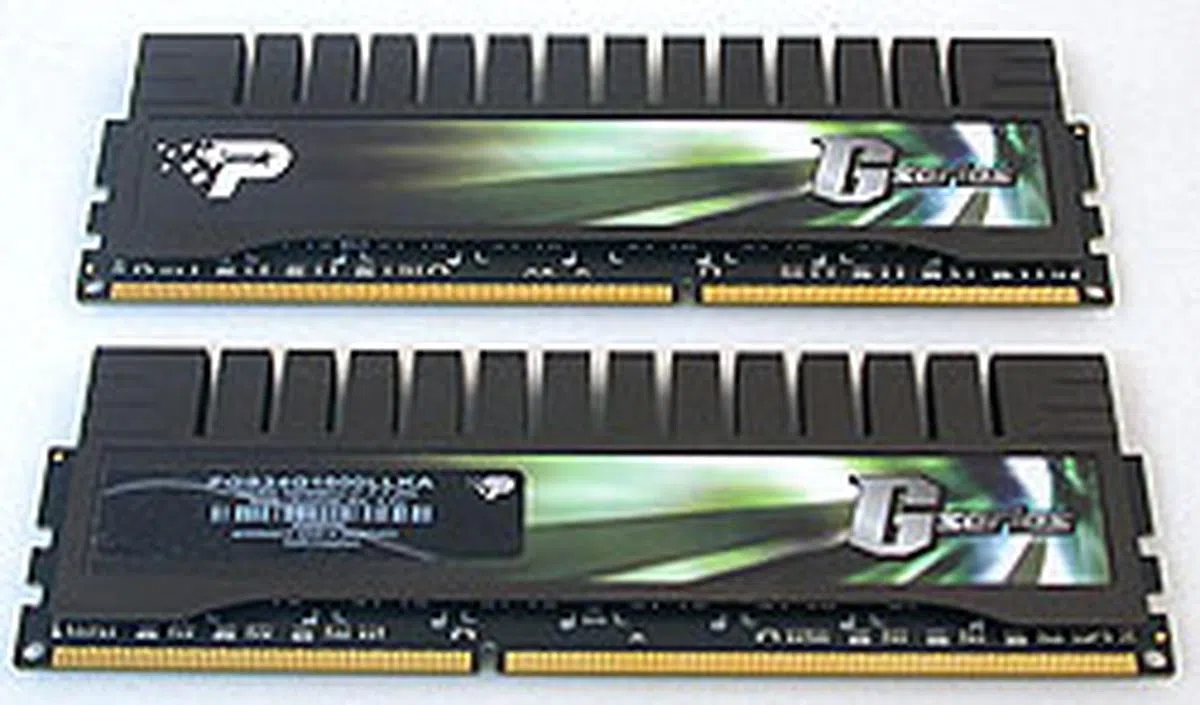 | |
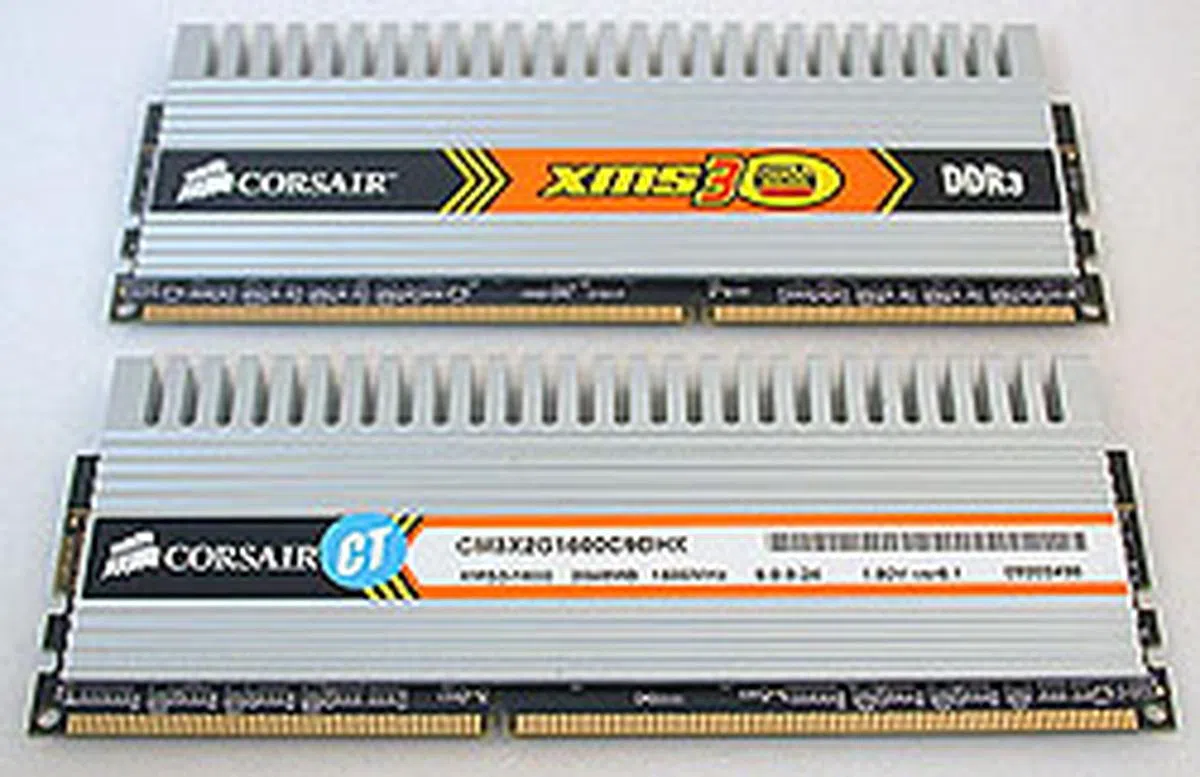 |  |
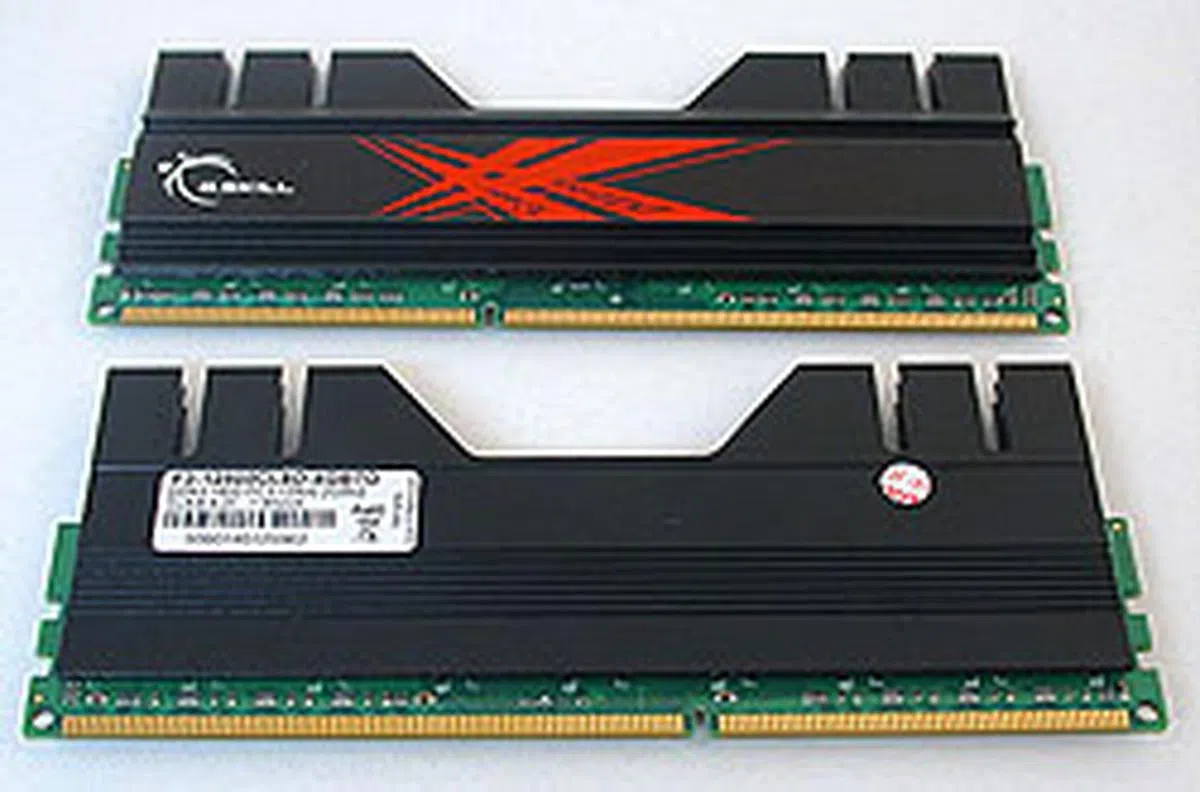 |  |
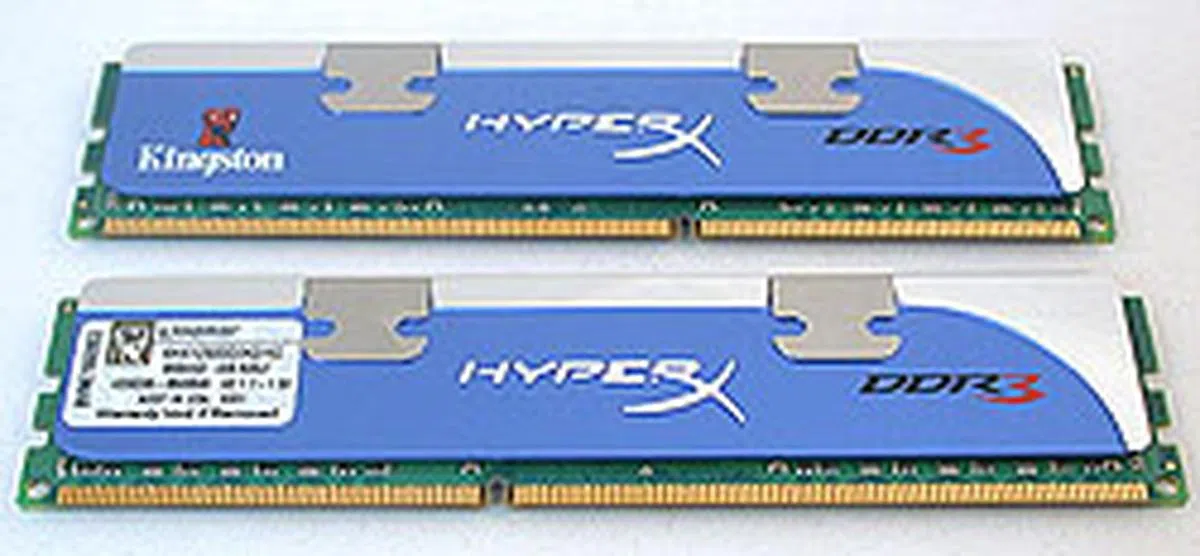 |  |
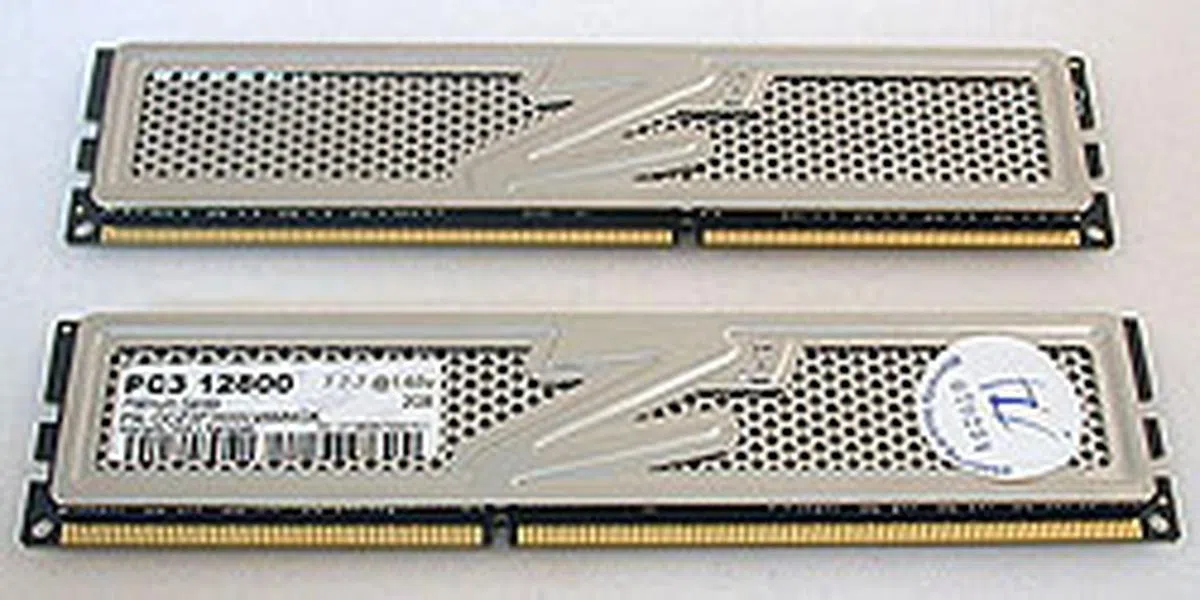 |  |
Best of the Triple-Channel Kits
When it comes to the triple-channel kits, it's probably accurate to say that there are no performance differences to speak off. They all have similar memory timings, with the same voltage rating and as our benchmarks have shown, the numbers are too close to call. In fact, one could even say that you can do almost as well with DDR3-1333 memory, because it's not going to matter too much to the typical user experience.
It is however when one attempts to overclock their systems that the greater allowance afforded by these higher frequency memory modules get their gloss, since it's quite unlikely that the typical DDR3-1333 memory can go up to 1800MHz as we managed with these DDR3-1600 memory. It was in overclocking that more well-known enthusiast brands like OCZ and Patriot showed their true colors.
Yet, it was a dark horse that emerged as our review progressed in the form of Kingston's HyperX memory kit. No doubt that its heat spreader appeared to be the classic and even boring design but it managed to hold its own in our temperature testing. Together with its very decent overclocking and overall performance, the Kingston HyperX memory kit quickly became a serious contender. Patriot's Viper series also did very well for these segments while others like OCZ faltered in the temperature stakes despite clocking the highest overclocking numbers.
And then it boiled down to the price. Kingston was the indisputable winner here, with its US$65 online listing easily beating the rest. Although Patriot was close too at US$81, it was not enough. Meanwhile the brands at nearly twice the price of Kingston were however not necessarily reflected in having the best overclocking score or the lowest temperatures, and thus put them out of the competition.
Performance | Overclocking | Temperature Testing | Value | Estimated Street Price (US$) | |
G.SKILL PI DDR3 PC3-12800 CL8 3GB Kit | 4.0 | 4.0 | 4.0 | 3.0 | 130 |
Kingston HyperX DDR3 1600MHz Low Latency XMP Ready 3GB Kit | 4.0 | 4.0 | 4.5 | 5.0 | 65 |
OCZ DDR3 PC3-12800 Intel i7 Triple Channel Kit | 4.0 | 4.5 | 3.5 | 3.0 | 125 |
Patriot Extreme Performance Viper Series DDR3 3GB PC3-12800 Low Latency DIMM Kit | 4.0 | 4.5 | 4.0 | 4.5 | 81 |
Team Group Xtreem Dark DDR3 PC3-12800 1600MHz CL8 Kit | 4.0 | 4.0 | 4.0 | 3.5 | 108 |
Hence, our eventual surprise winner turned out to be the Kingston HyperX triple-channel memory kit which also bagged our Most Value for Money award, followed closely by the Patriot Viper series. Both provide extremely good value and in the case of the Patriot, very nice overclocking too. The other brands too have decent performance and in the case of OCZ, the best overclocking. But like the expensive G.SKILL, their perceived lack of value is why they don't shine.
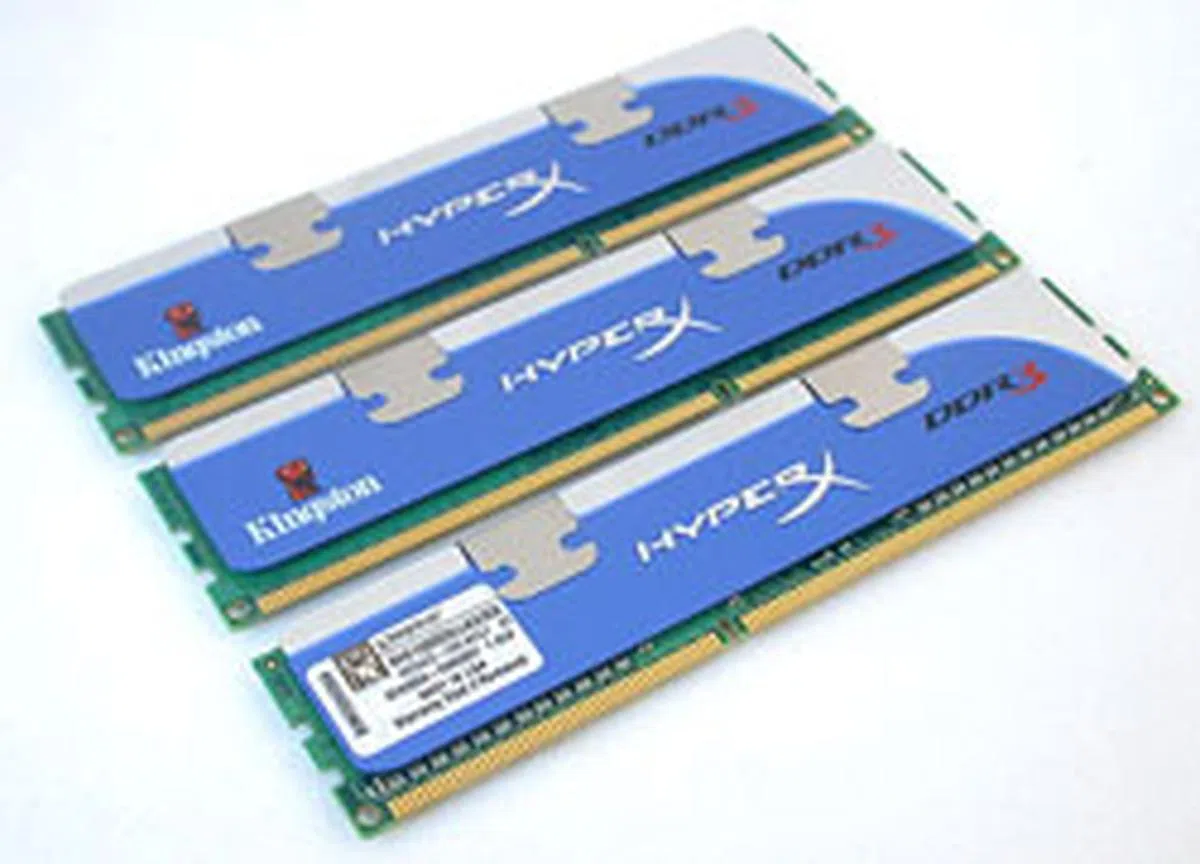 | |
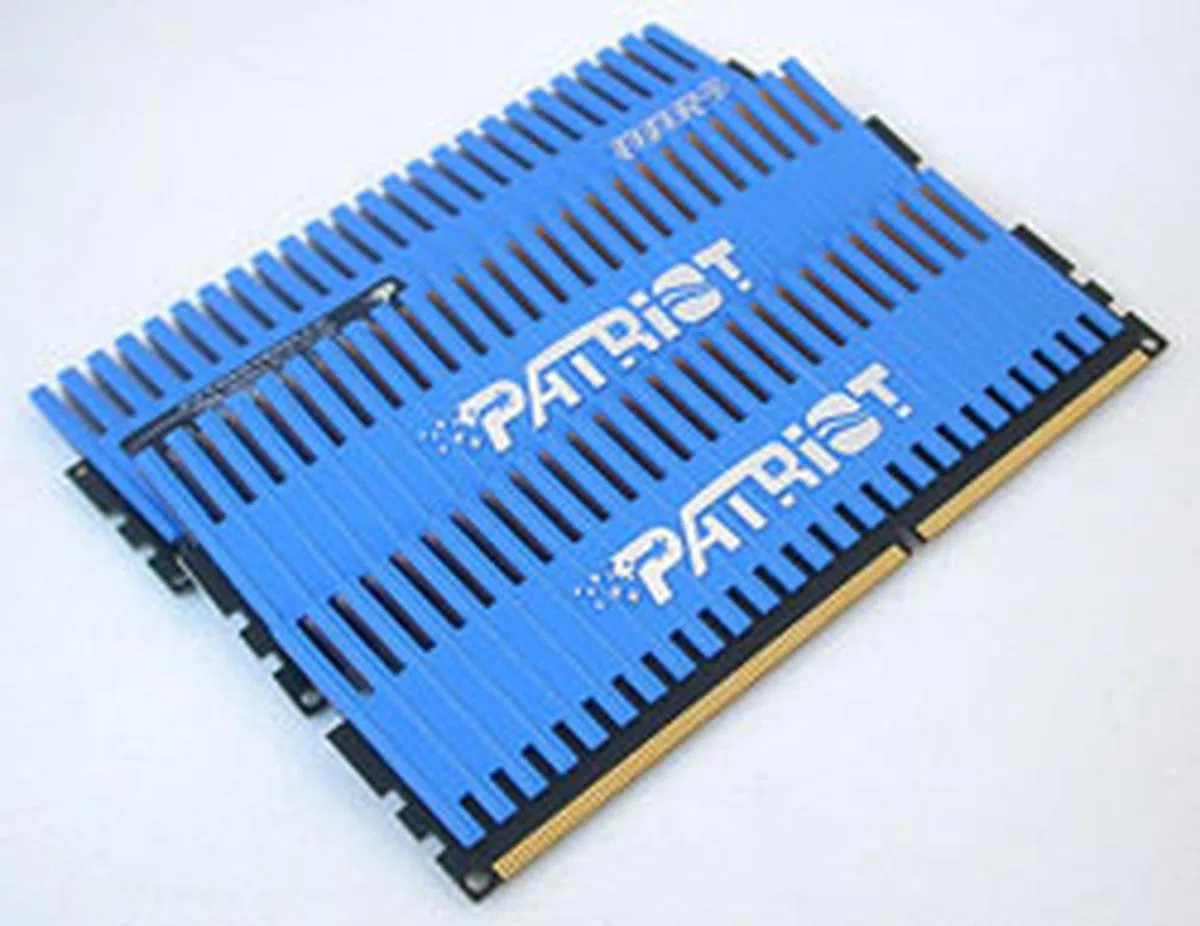 |  |
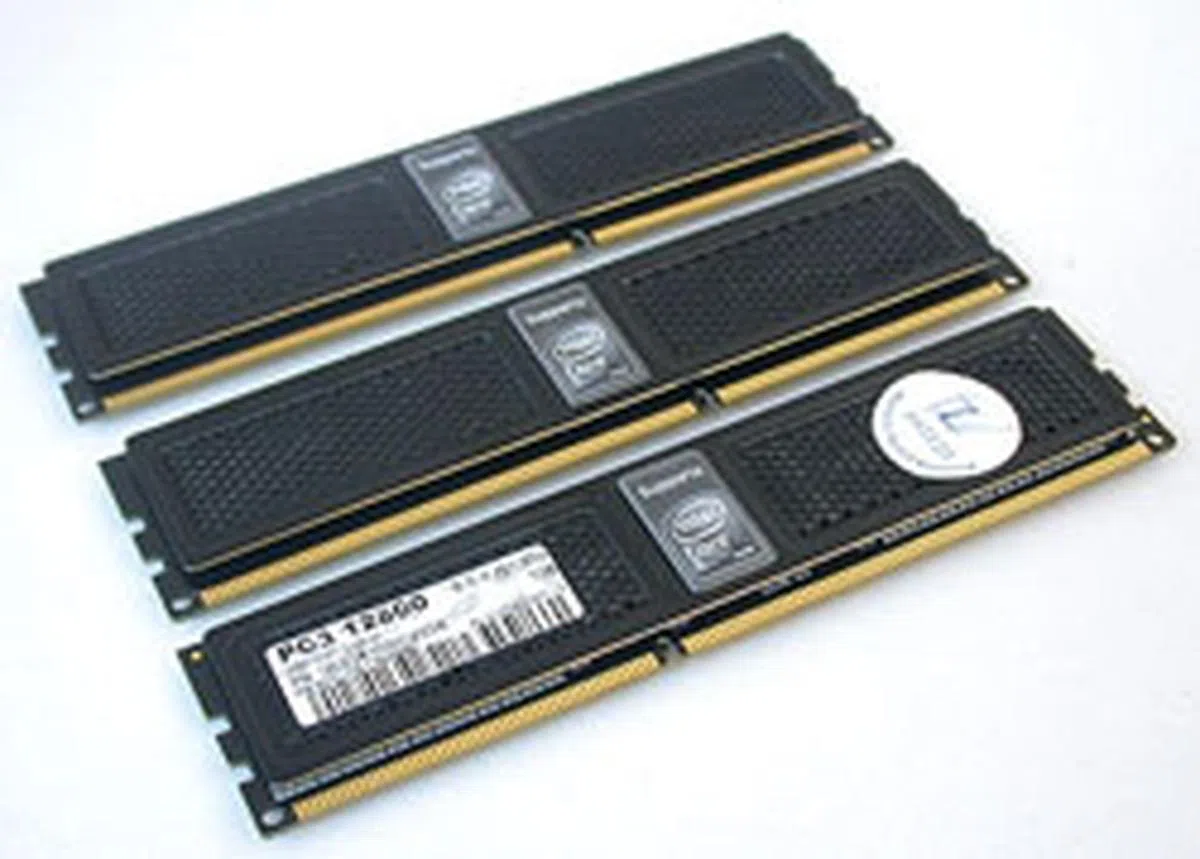 |  |
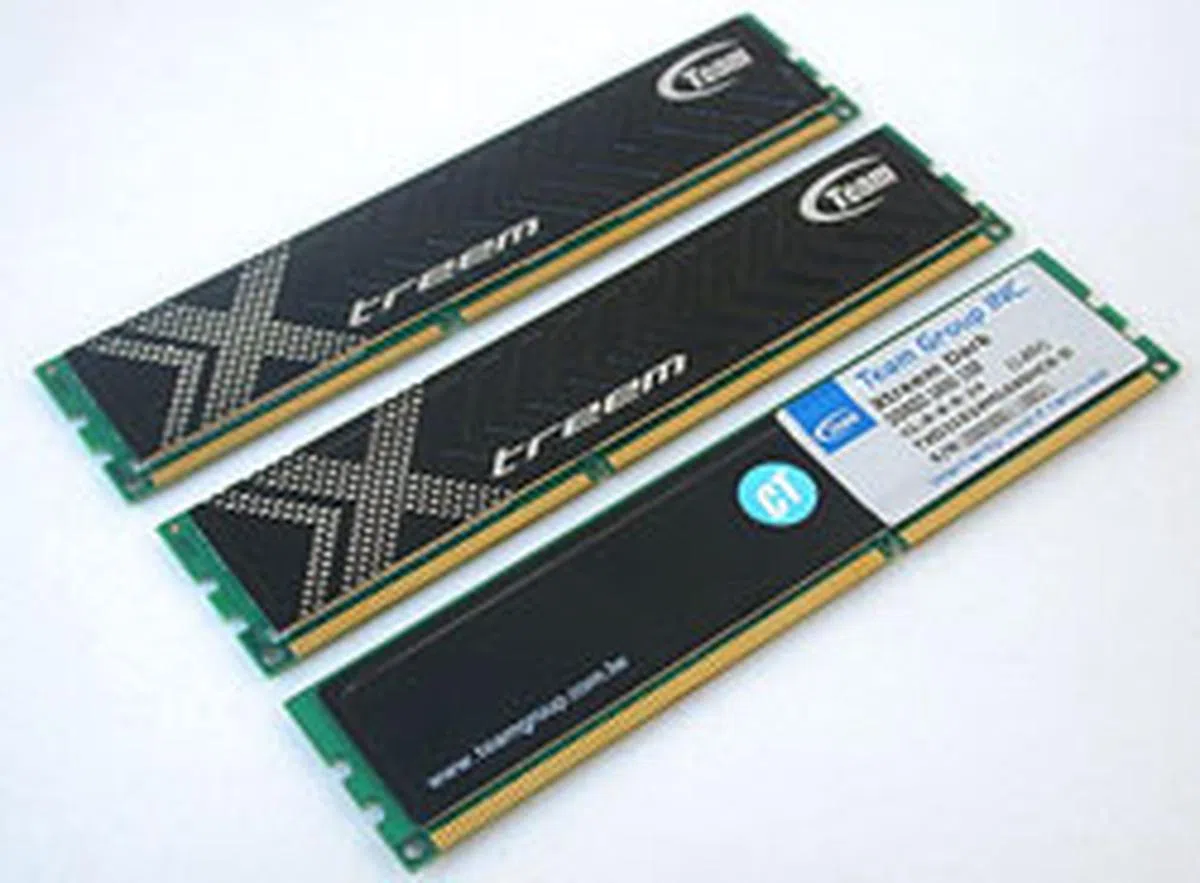 |  |
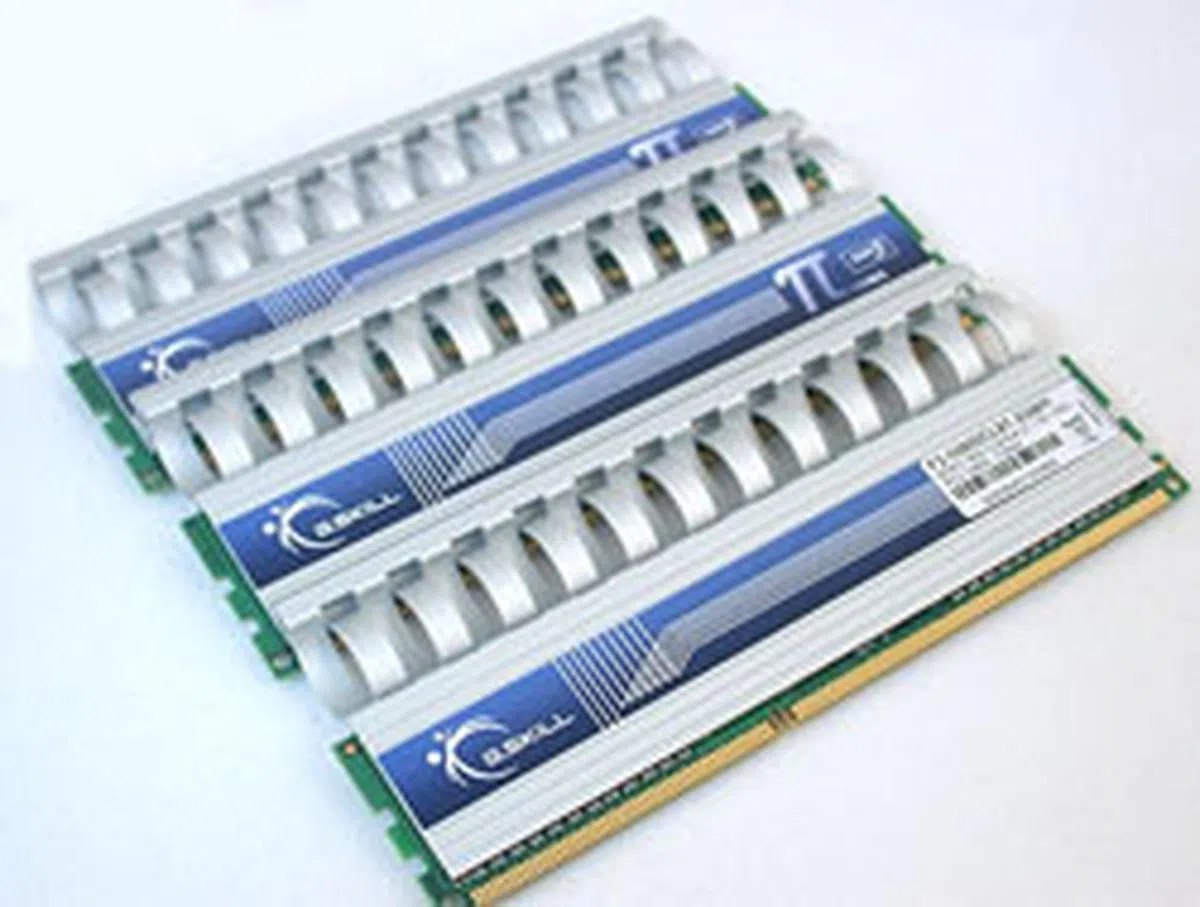 |  |
Our articles may contain affiliate links. If you buy through these links, we may earn a small commission.
